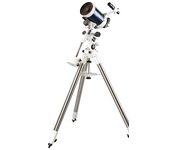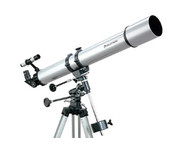Products reviews
Celestron Omni XLT 127 (300 x 127mm) Telescope$573.00 to $629.00
Tags:celestron, omni, xlt, 127, 300, x, 127mm, telescope, | Celestron PowerSeeker 80 EQ (225 x 80mm) Telescope$107.00 to $160.00
Tags:celestron, powerseeker, 80, eq, 225, x, 80mm, telescope, | Celestron AstroMaster 114 AZ (50 x 114mm) Telescope$120.00 to $250.00
Tags:celestron, astromaster, 114, az, 50, x, 114mm, telescope, |
Bushnell NorthStar 78-8846 (675 x 114mm) Telescope
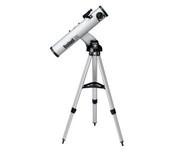
Real Voice Output version of premier Northstar 675x4.5". With the tough of a button this talking telescope describes the wonders of the night sky in a real human voice - an interactive and educational way to explore the universe. "Goto" Computerized tracking technology. Red Dot LED finderscope. Remote hand-held control module. Camera adaptable. Quick release tripod. Kinematic mount. Accessory tray. 20,000 Object Onboard Starfinding Computer. 1.25" Format Eyepieces. Barlow Lens. A great starting telescope!Minimize
Celestron AstroMaster 90EQ (100 x 90mm) Telescope
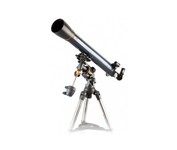
The AstroMaster produce bright, clear images of the Moon and planets. It is easy to see the moons of Jupiter and the rings of Saturn with every one of these fine instruments.
Celestron NexStar 130SLT (31145) (306 x 130mm) Telescope
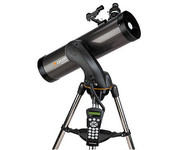
Computerized hand control with 4,000-object database SkyAlign allows you to align on any 3 bright celestial objects Motorized Altazimuth mount Focal ratio: f5 Focal length: 650mm
Celestron AstroMaster 114 AZ (50 x 114mm) Telescope
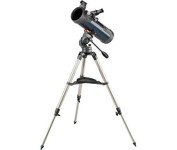
Designed for the novice user, the Celestron® AstroMaster™ 114 AZ telescope features a alt-azimuth mount with a convenient pan handle with built-in clutch for easy targeting and smooth motion perfect for watching whales, spotting birds, viewing nature or checking out your favorite star or planet. The compact, portable design with ample optical performance will excite any newcomer to the world of amateur astronomy.Minimize
